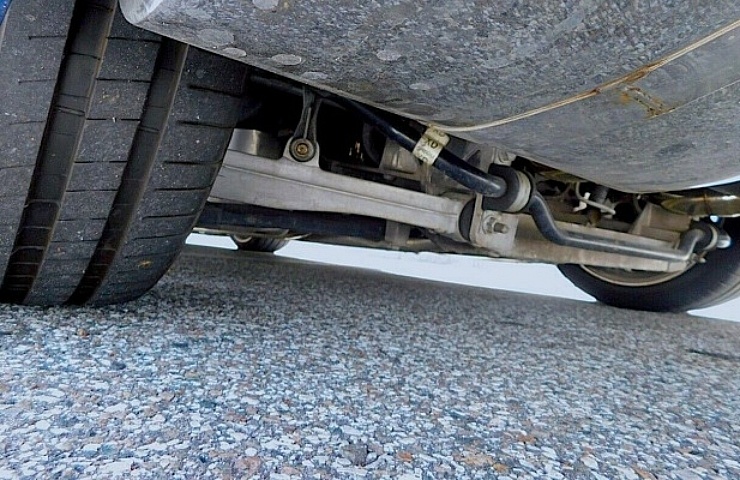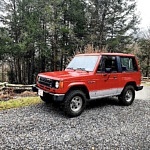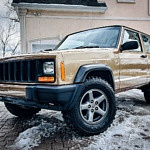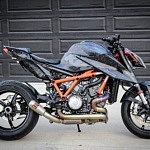The sway bar—also called an anti-roll bar or stabilizer—is a small tube-like metal piece mounted to a vehicle’s suspension. It connects to the suspension via a sway bar link. They’re fitted to either the front or back suspension, though you’ll often find them at both ends.
Sway bars ensure that your vehicle doesn’t tilt, roll, or sway excessively when taking turns. When they are faulty, cars lean too much and dip to one side. Aside from keeping your vehicle balanced during turns, sway bars prevent uneven wheel alignment and keep your tires in solid contact with the road.
The Link Is Critical
A sway bar link, also called a stabilizer bar link, connects the sway bar to the suspension system. It’s made of metal rods bolted to both the sway bar and the suspension. While the link doesn’t directly keep your car balanced during turns, it ensures the anti-roll bar stays firmly connected to the suspension.
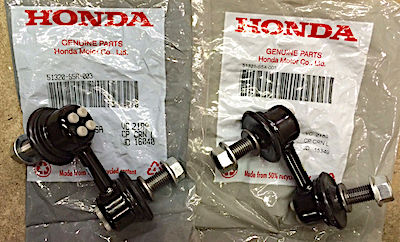
OEM Honda Civic/CRV links
Both components—the sway bar and the linking mechanism—are essential and need the same amount of attention. As small components carrying the car’s weight, the links can wear faster than the bar itself. If that happens, the sway bar could separate from the suspension, affecting its ability to provide a firm and stable ride.
Shop now for sway bar linksThis situation can undermine your confidence in your vehicle’s performance, especially in a sports car. Worse, it could be dangerous. The vehicle might tilt excessively during turns, reducing your ability to control it.
Checking If a Sway Bar Is Broken
One obvious way to spot a bad link is to listen for sounds while cornering or driving over bumps. Clunking, knocking, or rattling noises are telltale signs of problems with your sway bar.
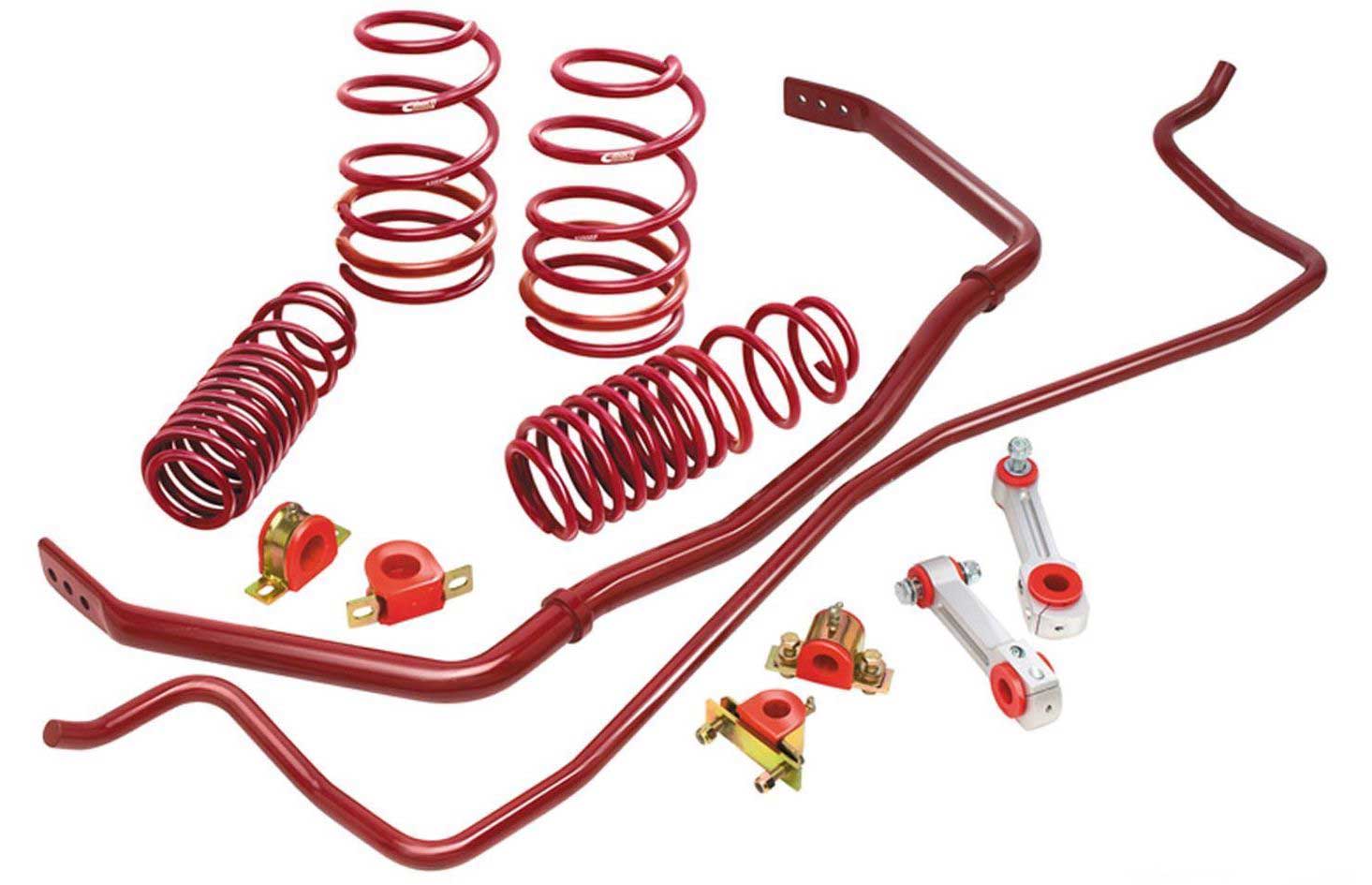
Eibach Sport-Plus Kit with Sportline springs and sway bars for 2017-2020 Honda Civic
A bad link also impacts steering. The steering wheel might feel loose or unresponsive, or the vehicle will pull to one side during turns.
To confirm a problem with the link, lift your vehicle with a jack and stands. Try moving the links manually by pushing on it while the wheel is in the air. Do they feel loose? If so, you might need to replace the link. Also, check other suspension components, like the bushings and ball joints, to be sure they are intact.
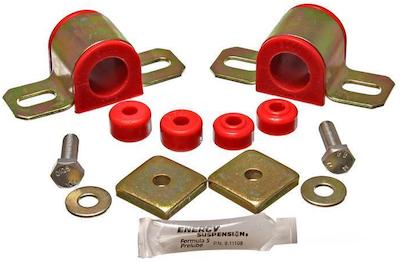
Energy Suspension front sway bar bushings – 1995-98 Nissan 240SX
Most sway bars last the lifetime of a vehicle. The problem usually lies with the links and bushings. Again, broken links affect the ability of the sway bar to do its job. Therefore, faulty links should be repaired or replaced without delay.
Read this: New Suspension Bushings Can Improve Handling
How to Fix a Broken Sway Bar Link
Replacing a broken link is a straightforward task. Here’s a list of the tools that are required, along with a step-by-step checklist.
Tools needed
- New sway bar links
- Sway bar nuts and lock nuts
- Torque wrench
- 8 mm wrench
- Allen wrench
- Impact wrench
- Pliers
- Penetrating oil (not lubricating fluid)
The Steps
- Park your car on level ground.
- Remove the wheels on the end of the vehicle where you’re working.
- Detach the link from the sway bar and shock absorber.
- For links with a hole in the stud, insert the correct-size Allen key into the hole and use a wrench to loosen and remove the nuts that hold the stud binding the link to the suspension system. Do this to both ends of the link.
- With the nuts out, remove the old sway bar links.
- Install new links with the exact dimensions as the old ones. Using wrong-sized links impacts drivability.
- For vehicles with studs, use the Allen wrench to hold down the stud while reinstalling the new lock nuts with a wrench. With the lock nuts in place, install the nuts by tightening with your fingers until the nuts touch the lock nuts. Then, use a torque wrench to tighten them to your manufacturer’s torque specification.
- Reinstall your tires and lower your vehicle.
Sway Bar Link Replacement Cost Estimate
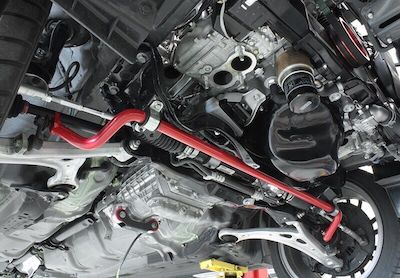
Perrin 25mm stiff adjustable front bar – 2008-2014 Subaru STI
A single link replaced by a professional mechanic usually costs between $125 and $175, including parts and labor. Of course, the price could be much higher depending on vehicle type, who is doing the job, and what other components need replacement. Vehicles with front links only will cost less to repair than those with both front and rear links.
You will save on labor if you do the job yourself. However, replacing related components will increase the cost. For example, if you’re changing the bushings, you may spend an extra $150 to $200.
Shop now for sway bars
